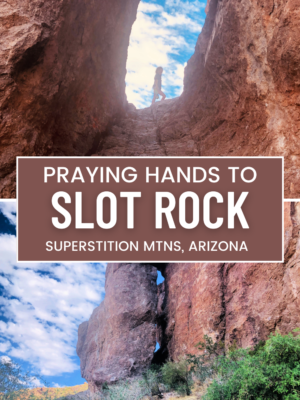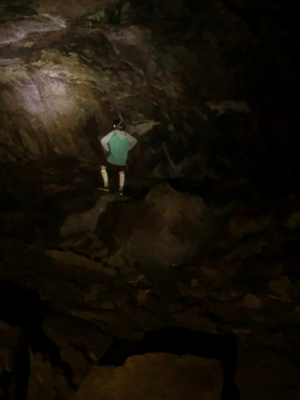Visit Walnut Canyon National Monument – one of Arizona’s greatest hidden gems. The monument is a beautiful, beautiful display of geological cliff formations, and diverse eco-systems. Know before you go!
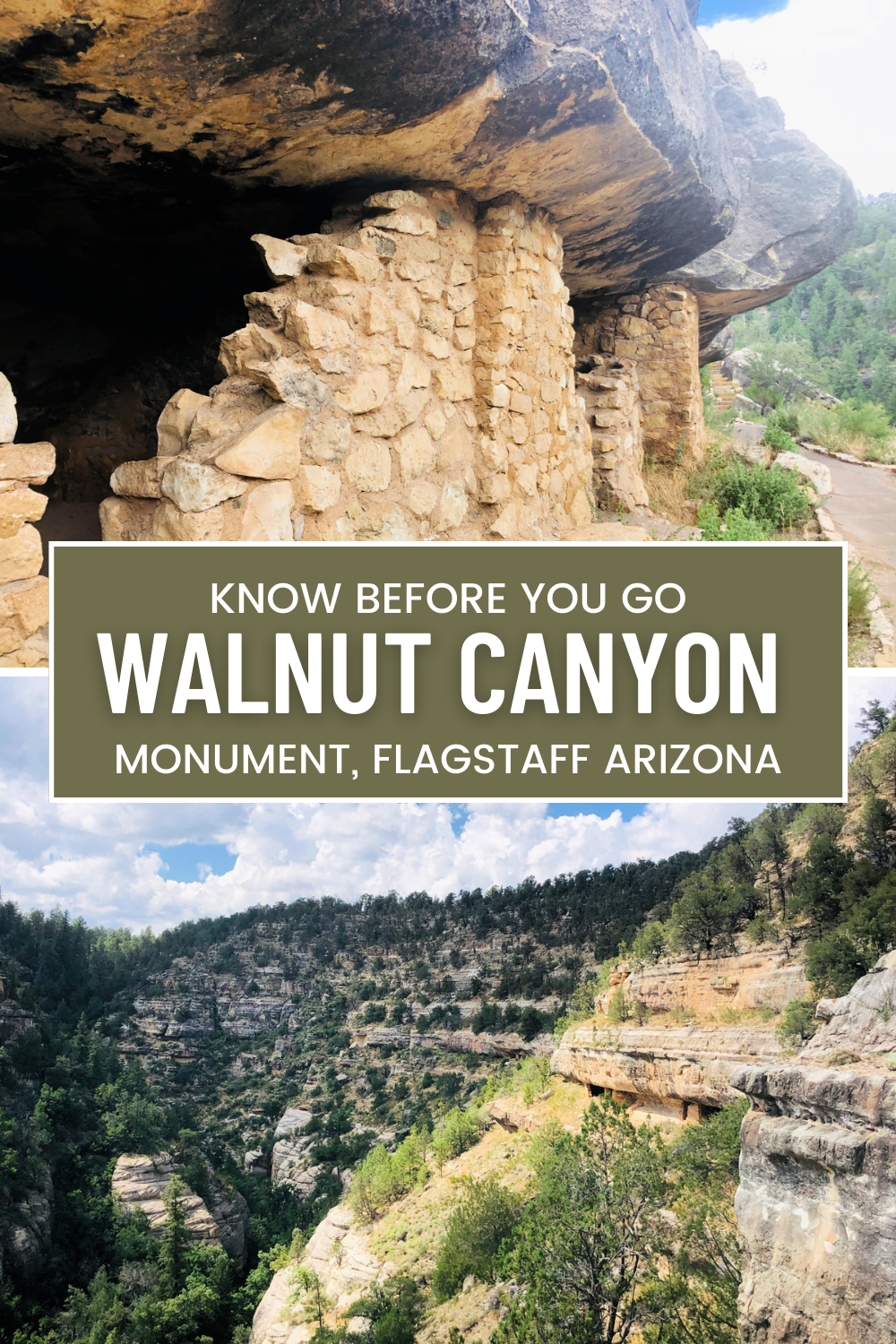
If you are looking to travel within the state of Arizona, Flagstaff is a wonderful place to spend a few days with the family.
Not only can you visit the remnants of an old volcano at Sunset Crater, and see ruins at Wutpaki, you can hike 3/4 of mail in the underground Lava Tubes (for absolutely FREE) and escape the heat.
But even more, you can visit Walnut Canyon National Monument – one of Arizona’s greatest hidden gems. The monument is a beautiful, beautiful display of geological cliff formations, and diverse eco-systems.
With limestone walls and ledges, the canyon is filled with a rich history, geological diversity and jaw dropping scenery of various animal and plant life.
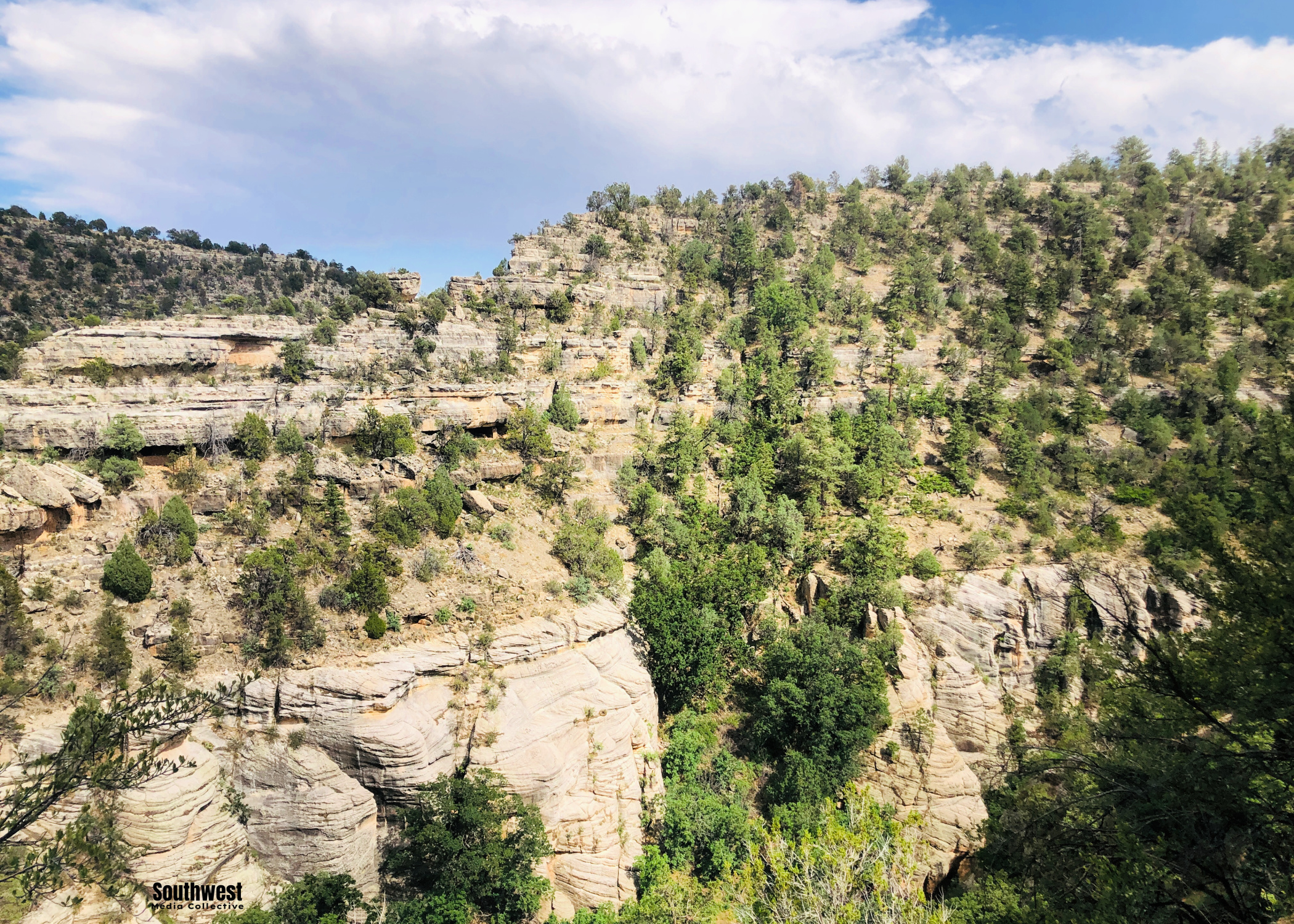
The most interesting of features at Walnut Canyon National Monument are the cliff dwellings that are built into the alcoves of the very very steep canyon walls.
If you are heading up to Flagstaff, visiting Walnut Canyon National Monument is a must for the entire family. Just outside of Flagstaff city limits, the monument is a great way to spend an afternoon.
Walnut Canyon National Monument
Approximately 700 years ago, Walnut Canyon was home to ancestral pueblos known as the Sinagua – a Spanish term that means “without water”. The name Sinagua came from the Spaniards and referred to the surrounding San Francisco Peaks – the Sierra Sin Agua.
The Sinaguan people built a variety of pueblo style homes in Arizona – from Tuzigoot National Monument to Montezuma Castle, and Wutpaki National Monument.
Walnut Canyon, however, is one of the best-preserved ruins. Here at Walnut Canyon, they took the natural steep canyon walls and transformed them into unique homes.
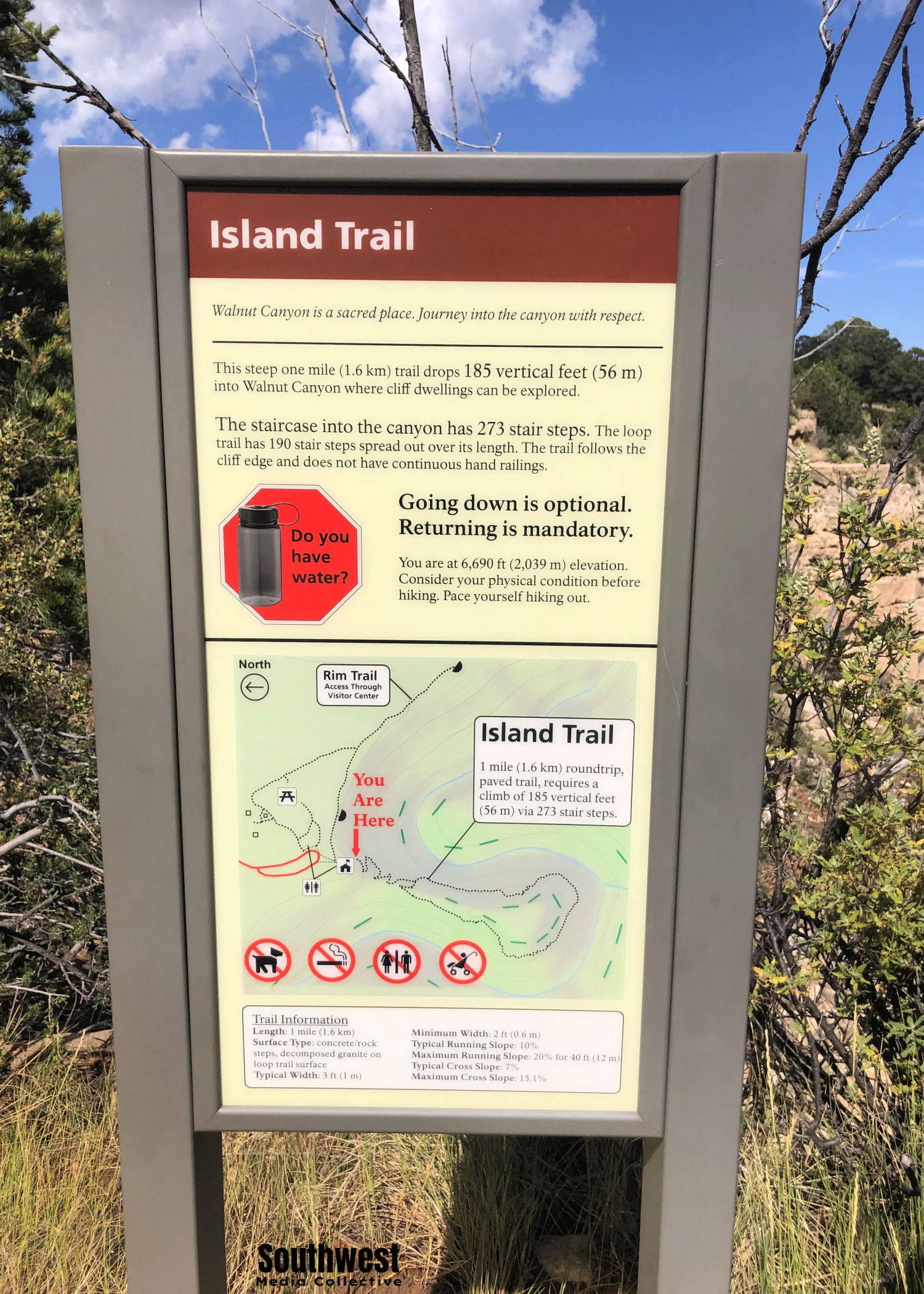
At the canyon, there are two trails – the Island Trail and the Rim Trail.
Taking the Island Trail will allow you to see 25 cliff dwelling rooms built between 1100 and 1250 AD. You can walk by them, and enter a select few (some are blocked off) – you’ll see the black walls and ceilings in a few, which are the result of the fires that they used for cooking and keeping their family warm.
If you look across the canyon, you’ll even see other cliff dwellings that they constructed also.
Though the Sinagua abandoned their homes inside the canyon, they did not disappear – there are ancestors of the Sinagua people that reside in the Southwest today.
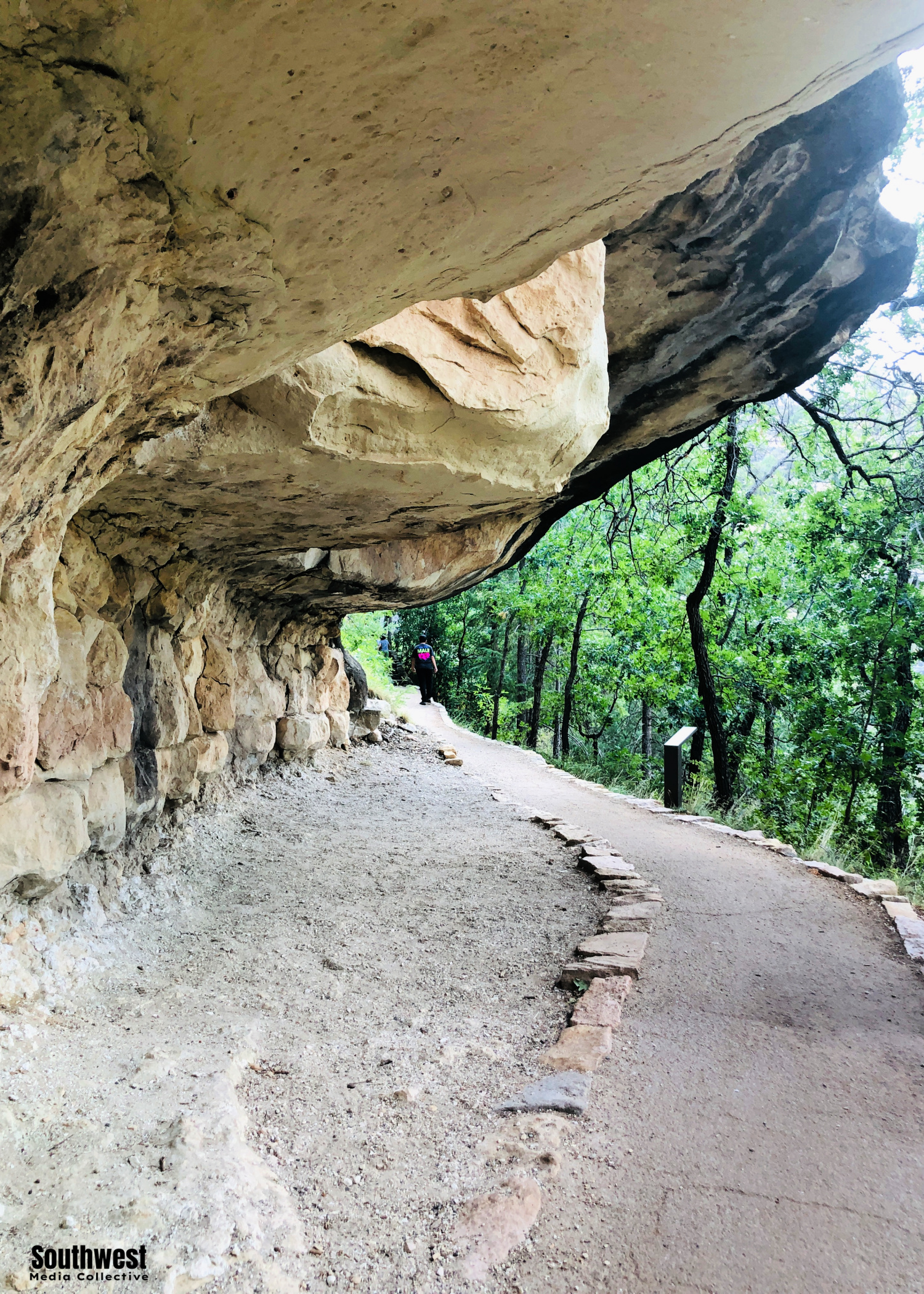
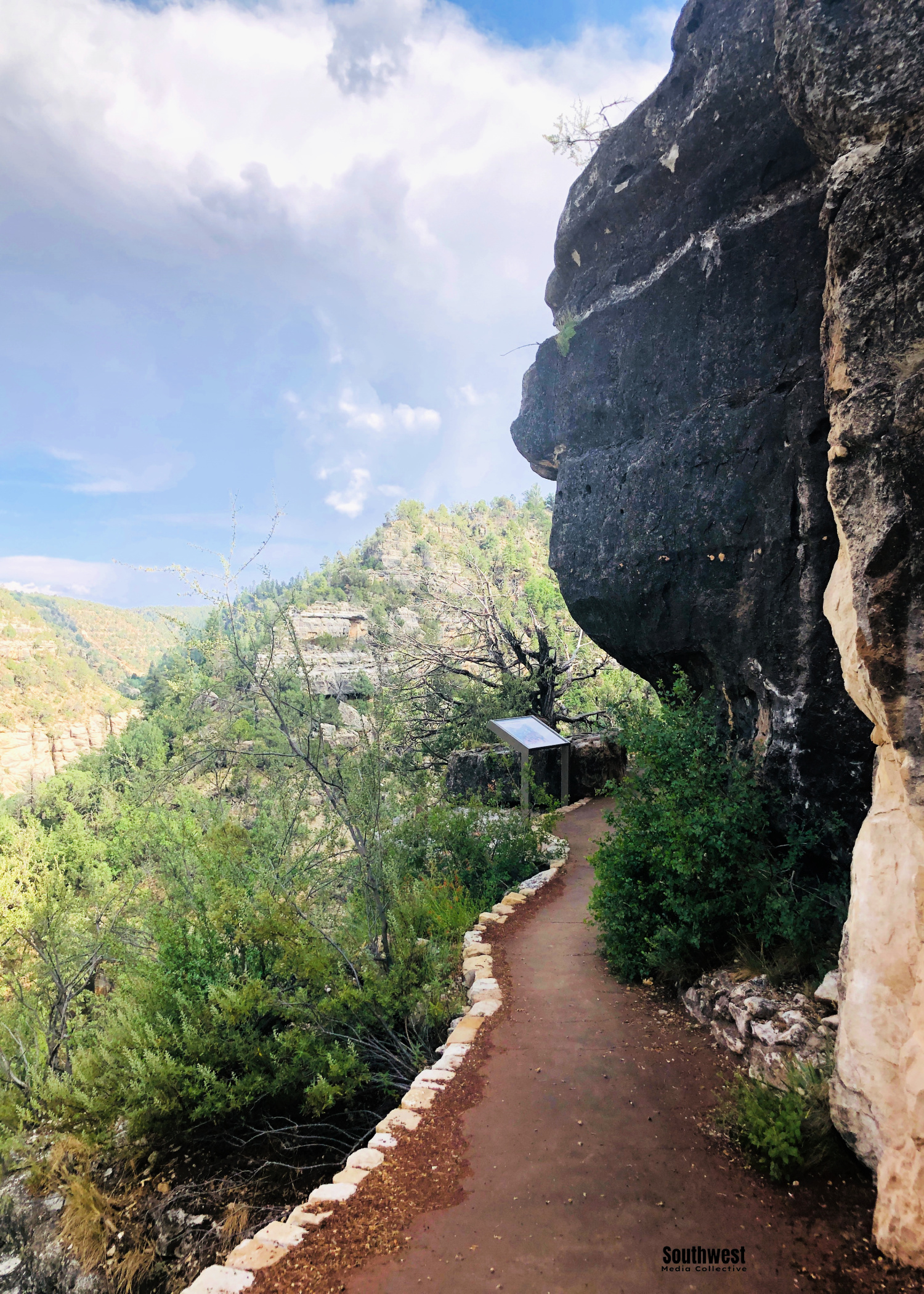
Walnut Canyon – 2 Trails
When visiting the canyon, you’ll have the option of one or two trails.
The Island Trail is the only trail that allows you to venture down into the canyon. You’ll go 1 mile (round trip), over a whopping 240+ steps at 7,000 feet elevation. This trail has hand rails and is a great way to see the actual dwellings, however, it is a strenuous workout if you are not used to exercise at this elevation.
The Rim Trail is short, paved and pet friendly – it won’t venture into the canyon but instead allows you to walk along the rim of the canyon. Viewfinder telescopes offer a close up of some of the cliff dwellings.
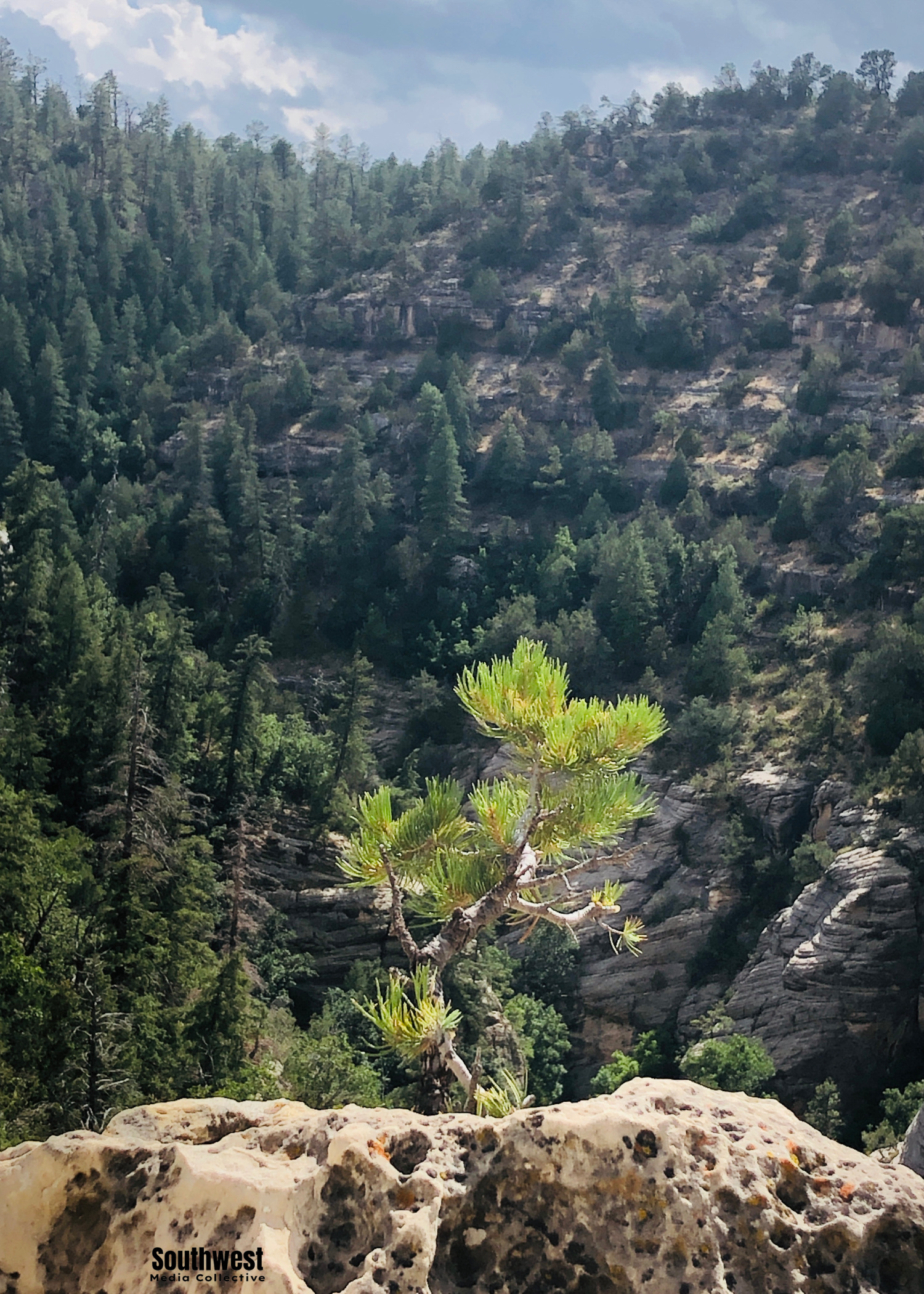
Geology of the Area
The geology of Walnut Canyon shows millions of years of earth’s history. There are several different layers of history – to include the Kaibab Limestone (upper layer) where the cliff dwellings are. Then, you’ll see the dark colored Toroweap Formation on the slopes, followed by the bottom third of the canyon walls which are white Coconino Sandstone.
All 3 layers make up the Colorado Plateau.
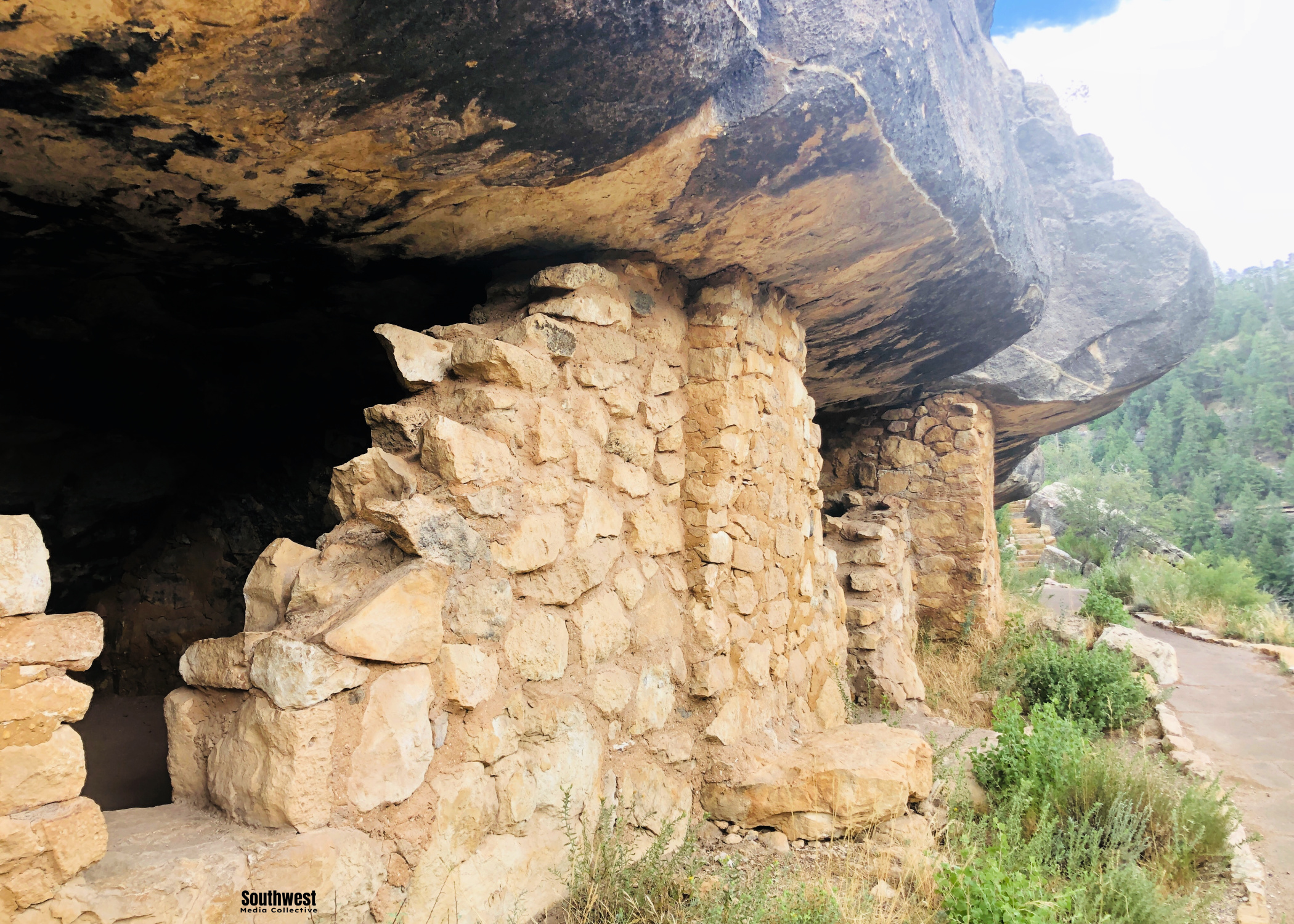
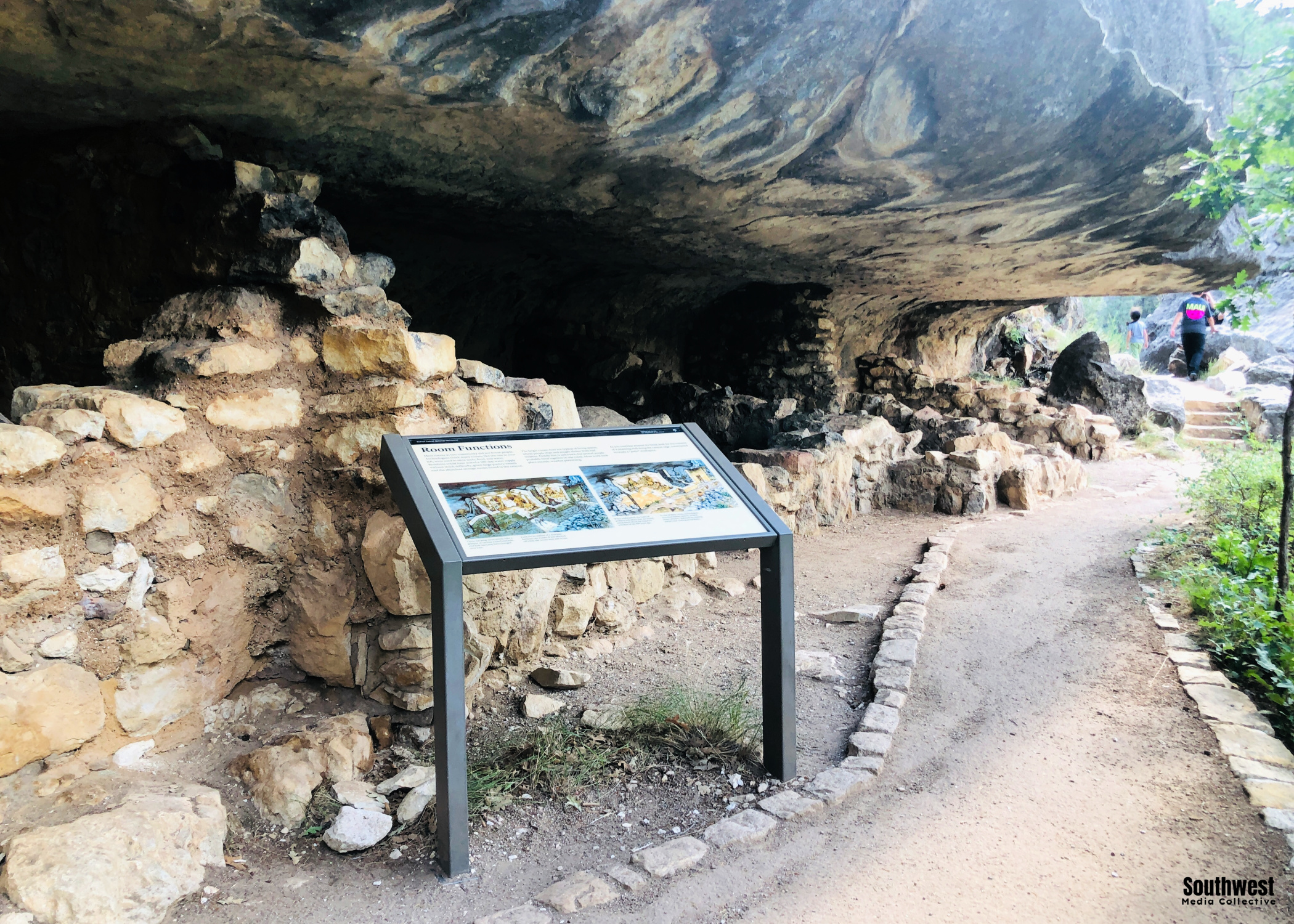
Visiting Walnut Canyon (Know Before You Go)
If you have a National Parks Pass, it’s free to visit Walnut Canyon. You can find admission prices here on the National Parks site.
The Island Trail is paved, 1 mile (round trip) – however, it is VERY steep! There are over 230 stairs leading down 185 vertical feet into the canyon at 7,000 feet elevation. Just remember – that while it is easy to go down, you will eventually have to come back up. It can be strenuous if you are not accustomed to exercise at that level of elevation.
Carry plenty of water and wear comfortable shoes!
If you have small children, it’s wise to carry them in a carrier if they cannot go down the steep stairs.
Don’t forget to stop by the Visitor Center – you’ll find murals and exhibits that tell a story about these ancient people. There is also a gift shop that you will want to make sure you visit.
To get to Walnut Canyon – take Interstate 40 east approximately 7.5 miles past Flagstaff. You’ll exit at 204 and travel 3 miles south (right at the top of the exit). As you travel the last 3 miles off exit 204, look for wildlife as you will often times see mule deer and elk.
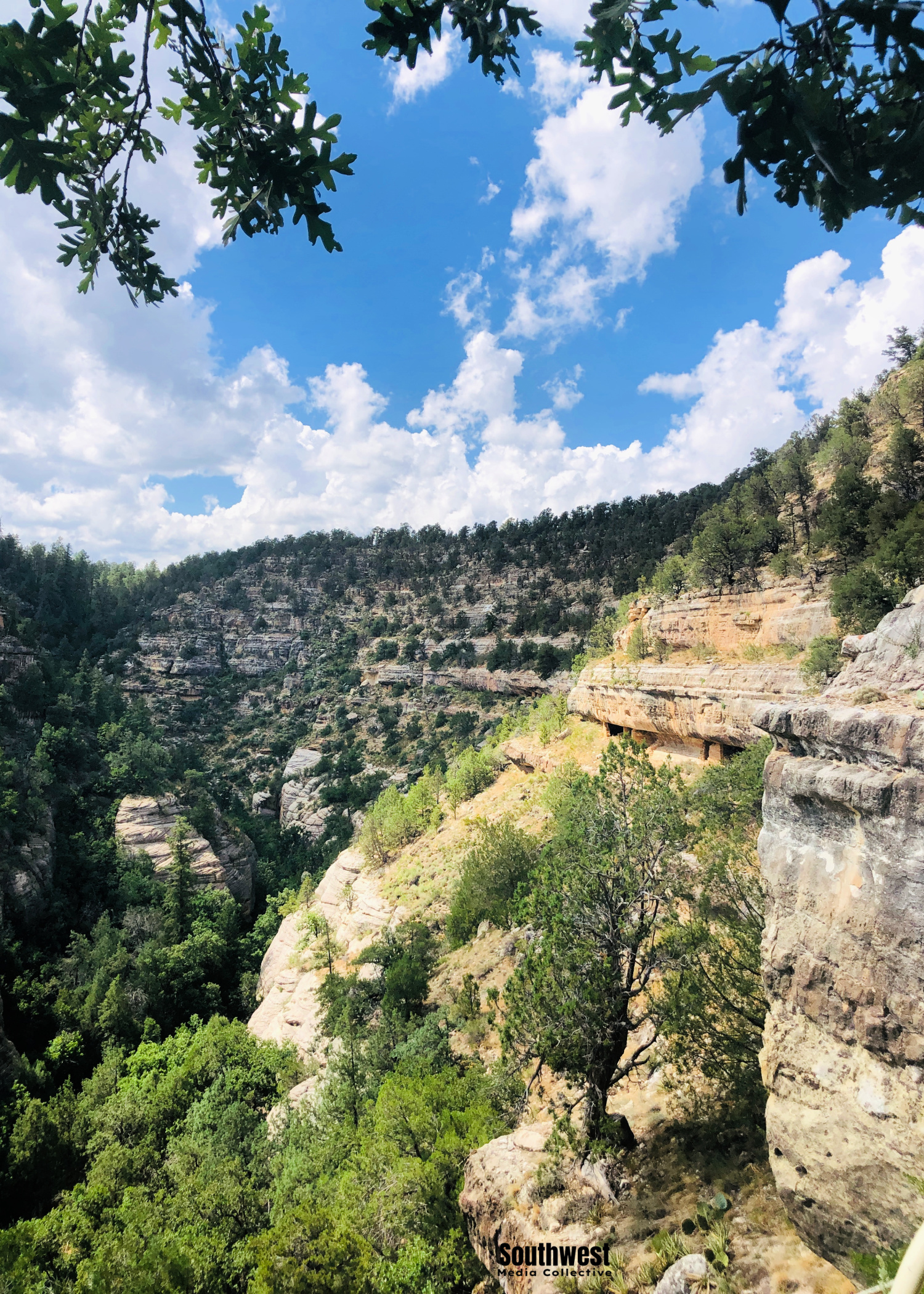
The Views are Beautiful
Walking along the Rim Trail, you’ll have the opportunity to see the views of the canyon. You’ll see the depth of the canyon (400 feet and 1/4 mile width) – you ‘ll also be able to see the cliff dwellings scattered on both sides of the canyon.
While you won’t be able to venture into the canyon on the Rim Trail (like you would with the Island Trail), it’s a beautiful vantage point to take in the beauty of the area.
The elevation and more modest temps lend way to a greater variety of greenery at Walnut Canyon than other areas of the state of Arizona – you’ll find piñon pine, juniper and ponderosa pine trees. You’ll also see a variety of wildlife and desert vegetation.
Other places to visit in the area
If you are taking a day trip to Walnut Canyon, you’ll want to make sure you visit these other places that aren’t too far away:
- Meteor Crater (just a few miles east!)
- Lava Tubes (Underground caves – which are completely free!)
- 10 Must-See Arizona Road Trip Destinations
- 7 Arizona Weekend Road Trips
- 16 One-Day Road Trips from Phoenix
- Touring Lowell Observatory in Flagstaff (Know Before you Go)

